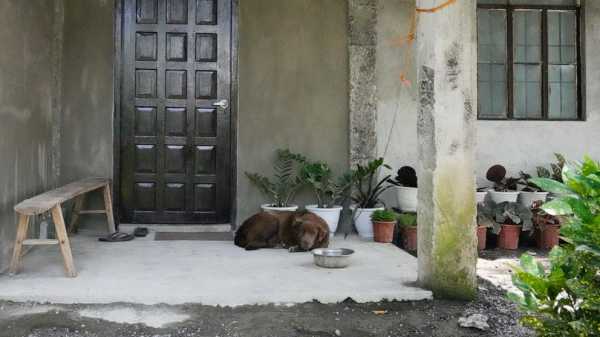
MALILIPOT, Philippines — Nearly 20,000 people have fled from an erupting Philippine volcano and taken shelter in schools, disrupting education for thousands of students, many of whom are having classes in chapels and tents or under trees, officials said Friday.
The Mayon volcano in northeastern Albay province, one of the deadliest of 24 active volcanoes across the Philippine archipelago, began expelling lava late Sunday in a gentle eruption that has not caused any injuries or death. But it could drag on for months and cause a prolonged humanitarian crisis, officials warned.
Most of those forced to evacuate live in farming villages within a 6-kilometer (3.7-mile) radius of the volcano’s crater that has long been designated as a permanent danger zone but has been home to thriving communities for generations.
The evacuees were directed to more than 20 emergency shelters, which are mostly grade and high school campuses. Every classroom has turned into an overcrowded sanctuary for several families with sleeping mats, bags of clothes, cooking stoves and toys for children.
More than 17,000 students in five Albay towns are among affected by the displacements for the eruption. About 80% are continuing their daily school lessons through an emergency system in which parents teach their children at home or elsewhere using school-provided “learning modules,” said Alvin Cruz of the Department of Education in Albay.
The temporary distant-learning approach for students was extensively used during the two years of the coronavirus pandemic, when most of the Philippines was under police-enforced quarantine that restricted people to their homes.
“We came from the pandemic and the learning loss was grave, and now we have the Mayon volcano erupting,” Cruz told The Associated Press. “Our challenge now is how to track the displaced school children so we can give their parents the learning modules.”
Some teachers are trying to continue in-person classes, meeting with their students inside village halls, chapels, gymnasiums and daycare centers, outside in gardens and under trees, or even in school corridors, Cruz said.
“We can’t do anything because we’re in an emergency,” he said. “We will always find ways to ensure the learning continuity."
At the San Jose elementary school campus now crammed with more than 2,400 displaced villagers in Malilipot town, AP journalists saw teachers holding classes along narrow open-air walkways, in a flower garden, inside a tiny guest hut and under the shade of a tree.
“Life must go on despite the volcano,” teacher Shirley Banzagales said as she held a mathematics class for 13 children in uniform under a mango tree. “We are now essentially in an evacuation camp, but I have to continue teaching my students."
President Ferdinand Marcos Jr. flew to Albay on Wednesday to reassure displaced villagers, hand out food and discuss with the provincial governor and town mayors the impact of the eruption on villagers, schoolchildren and the province’s economy.
The eruption is the latest natural calamity to test the administration of Marcos, who took office last June in a Southeast Asian nation regarded as one of the most disaster-prone in the world. About 20 typhoons and storms lash the Philippines every year, and the archipelago with 24 active volcanoes is shaken by frequent earthquakes.
Marcos told evacuees at one center that it could be up to three months before the volcanic eruption eases and allows them to return home.
Some of the displaced villagers have complained about heat and overcrowding in emergency shelters, and local officials pledged to provide more electric fans and improve their condition.
Albay's governor, Edcel Greco Lagman, expanded the permanent danger zone around Mayon to a 7-kilometer radius Monday and has warned people living nearby to be ready to move out quickly if the volcano's conditions should intensify.
Mayon appeared calm Friday, though government volcanologists said lava was still flowing slowly down its slopes and could not be seen easily under the bright sun.
The 2,462-meter (8,077-foot) volcano is a top tourist draw in the Philippines because of its picturesque conical shape, but is the most active of the country’s 24 known volcanoes. It last erupted violently in 2018, displacing tens of thousands. An 1814 eruption buried entire villages and killed more than 1,000 people.
___
Associated Press journalist Joeal Calupitan contributed to this report.
Sourse: abcnews.go.com






